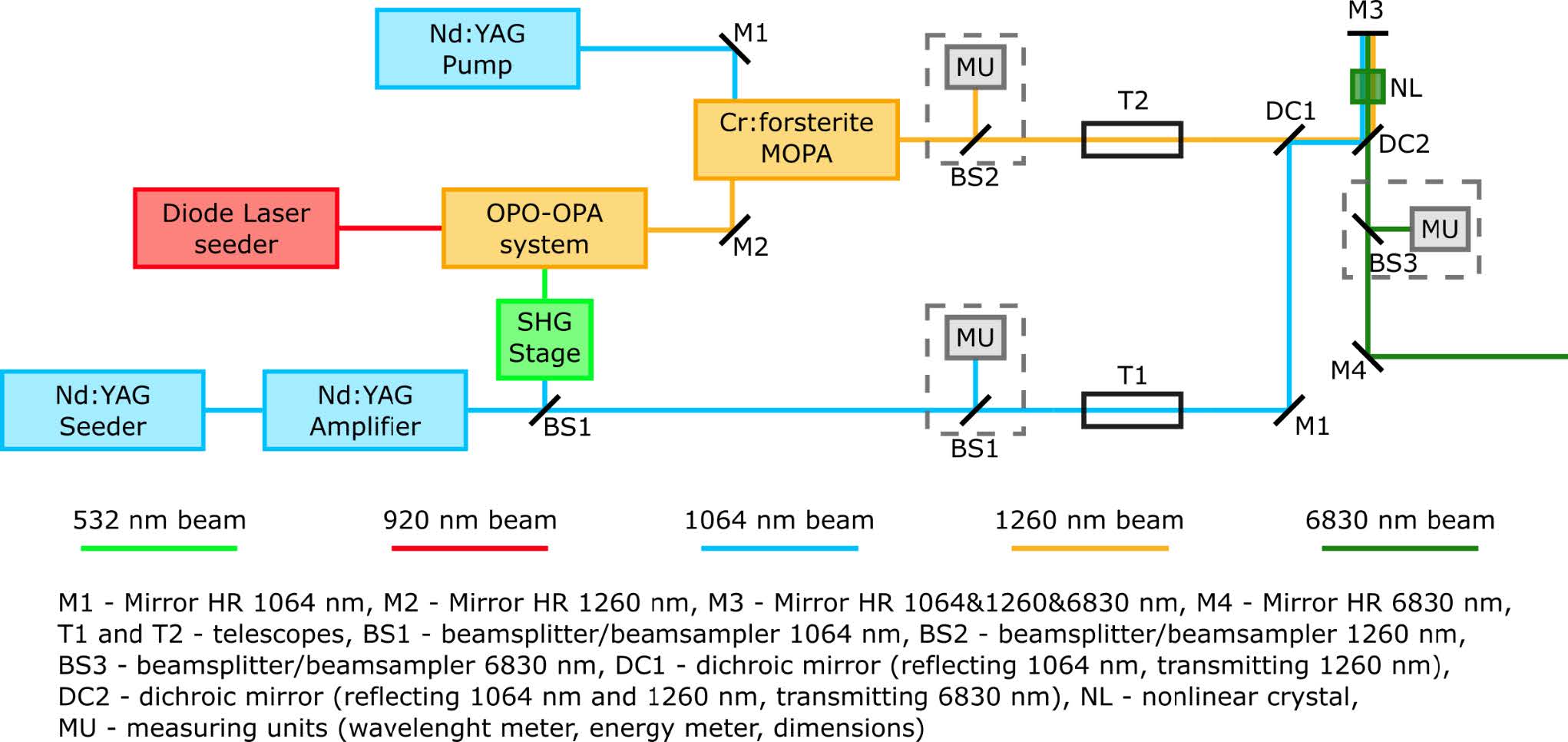MENPHYS
MEtrology and Nonlinear optics for Precision muonic HYdrogen physicS
The MENPHYS project aims to improve the laser system of the FAMU experiment.The current FAMU laser system relies on a Master Oscillator-Power Amplifier (MOPA) architecture featuring a tunable single longitudinal mode Cr:forsterite laser system (1260 nm) as master oscillator, and a multi-stage amplifier based on Cr:Forsterite, pumped by another Nd:YAG laser. The tunability and frequency stability of the current system ultimately rely on the performance of the Cr:Forsterite master oscillator. The final DFG process currently takes place in a 10x10x27 mm3 BaGa4Se7 nonlinear crystal, thus producing up to 1 mJ of pulse energy at 6.8 μm. This solution has proven adequate in terms of linewidth, whereas a higher output energy, a higher frequency stability, a better tuning agility and, to some extent, a better beam quality would be desirable.
The MENPHYS proposal addresses these aspects by developing and implementing a new master oscillator emitting at 1260 nm, based on an Optical Parametric Oscillator/Optical Parametric Amplifier (OPO/OPA) laser source.
Such a design (schematically shown in the figure below) is inspired by an architecture recently described in literature. The new master oscillator will be based on two KTP nonlinear crystals, pumped by a narrow band, frequency doubled Nd:YAG laser at 532 nm and seeded by a narrow band diode laser operating at 920 nm. The pump energy will be provided by the same single mode Nd:YAG laser used as pump in the final DFG stage, as this device can provide excess energy with respect to the needs of the DFG process. The available pump pulse energy will be split between the OPO (singly resonant at 920 nm) and a further OPA stage (also based on KTP) acting as a preamplifier. After the OPA the output energy is expected to be around 10 mJ. The subsequent Cr:Forsterite multipass amplification chain will be re-designed and upgraded in output energy. The higher injection energy delivered by the new oscillator/preamplifier will allow for a better energy extraction from the Cr:Forsterite amplifiers. Moreover, we expect a stable single frequency mode operation over times of the order of several hours (without manual intervention) compared with the current tens of minutes.
MENPHYS Goals
The main goal of the MENPHYS project is to develop, implement and apply the most advanced optical methods and laser technologies to strengthen the potentials of the FAMU experiment. Specifically, it is planned to:- upgrade significantly the mid-infrared pulsed laser system;
- increase the accuracy of the ethylene transition frequencies that are used as calibration standards;
- develop a reliable reference oscillator near 6.8 μm for the online absolute frequency calibration of the excitation laser;
- develop a specialty optical fiber system to transport the laser light to the muon beam line.

